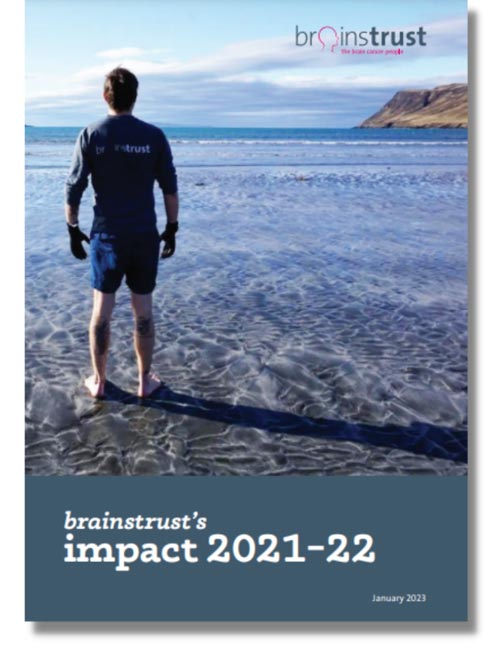Back in February, during TEAFEST, brainstrust appealed to supporters for help with a project that was a little bit different. We asked anybody savvy with a pair of knitting needles to spend a little time crafting a beautiful knitted elephant.
These elephants are for little brainstrust – the crucial arm of our charity that is dedicated to supporting children, teenagers and their families following a brain tumour diagnosis.



What little brainstrust does
500 children are diagnosed with a brain tumour in the UK every year. Navigating life in the face of this terrifying diagnosis is incredibly challenging, particularly for a family that needs to explain the situation to young children. There are also implications beyond treatment for children that have a brain tumour that are not widely known. One third face a future with a physical or cognitive deficit.
Little brainstrust provides families facing these challenges:
- Opportunities to connect with other families
- A space and time to talk about living with a brain tumour
- Information and resources to empower decision making

The kindness of our community
Thank you to everybody who knitted an elephant. They have arrived at our little Isle of Wight office from all over the UK, along with beautiful messages to pass on with them.
These hand-made elephants are a lovely addition to our little brainboxes. We send these boxes, packed full of useful resources, to help families get to grips with a diagnosis and help broach the topic with young children. These resources include the beautifully illustrated Snaggle Tooth Splat book as well as toys, tea bags and other more practical information and guides.
More than just a knitted elephant
They are lovely, but they represent so much more than a cute token. They are a gesture of kindness from a thoughtful stranger. A reminder that there is a community of people sending support and warm wishes to a family in need.
By knitting an elephant for little brainstrust, you can directly support a family facing an enormous challenge, and let them know that they’re being thought of. That’s pretty special.
We have sent out almost a quarter of our stock of elephants already. If you feel like picking up your knitting needles for a family that could do with a boost, download the knitting pattern here!
Know a family that could use a little brain box? Please get in touch.









